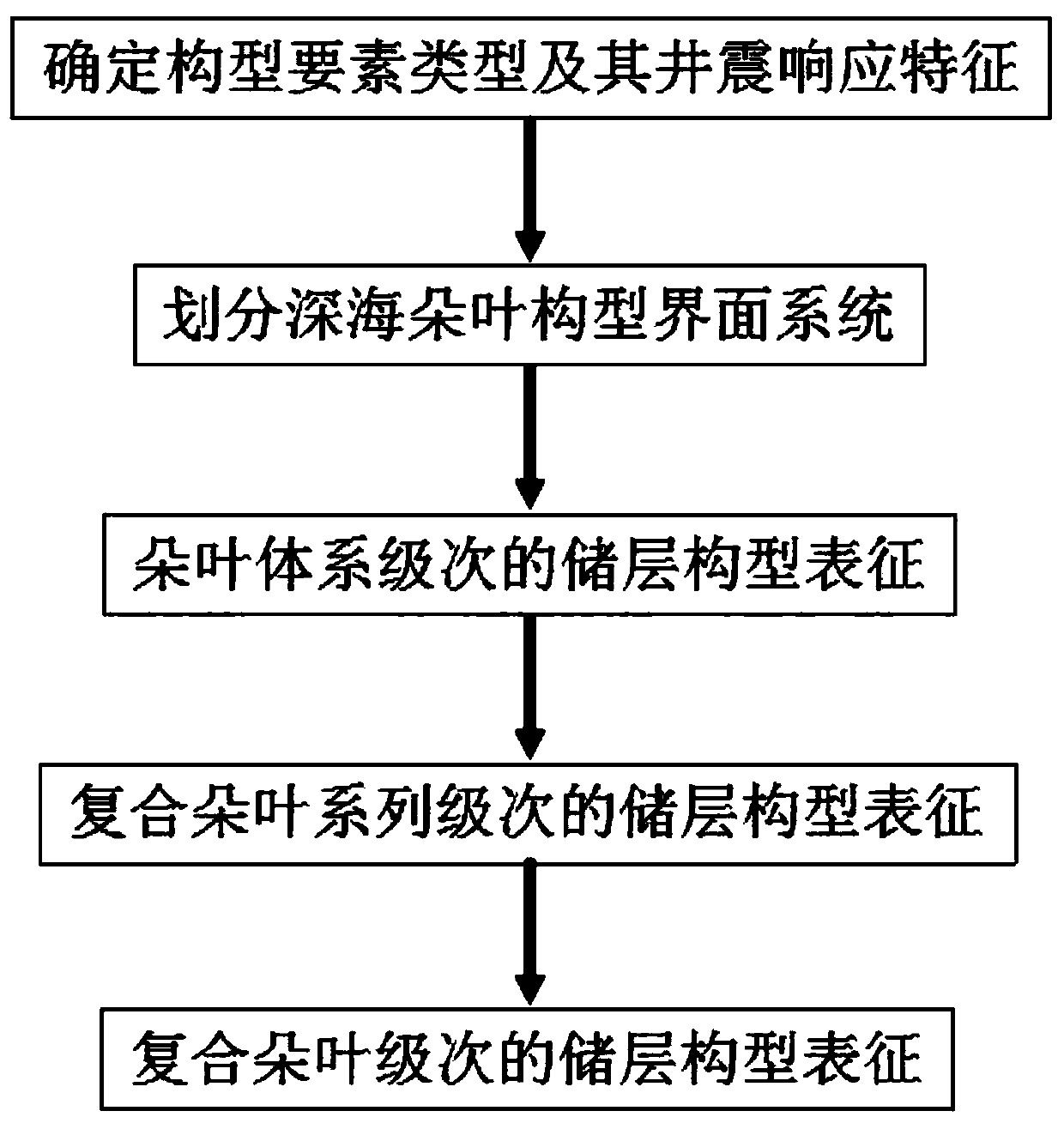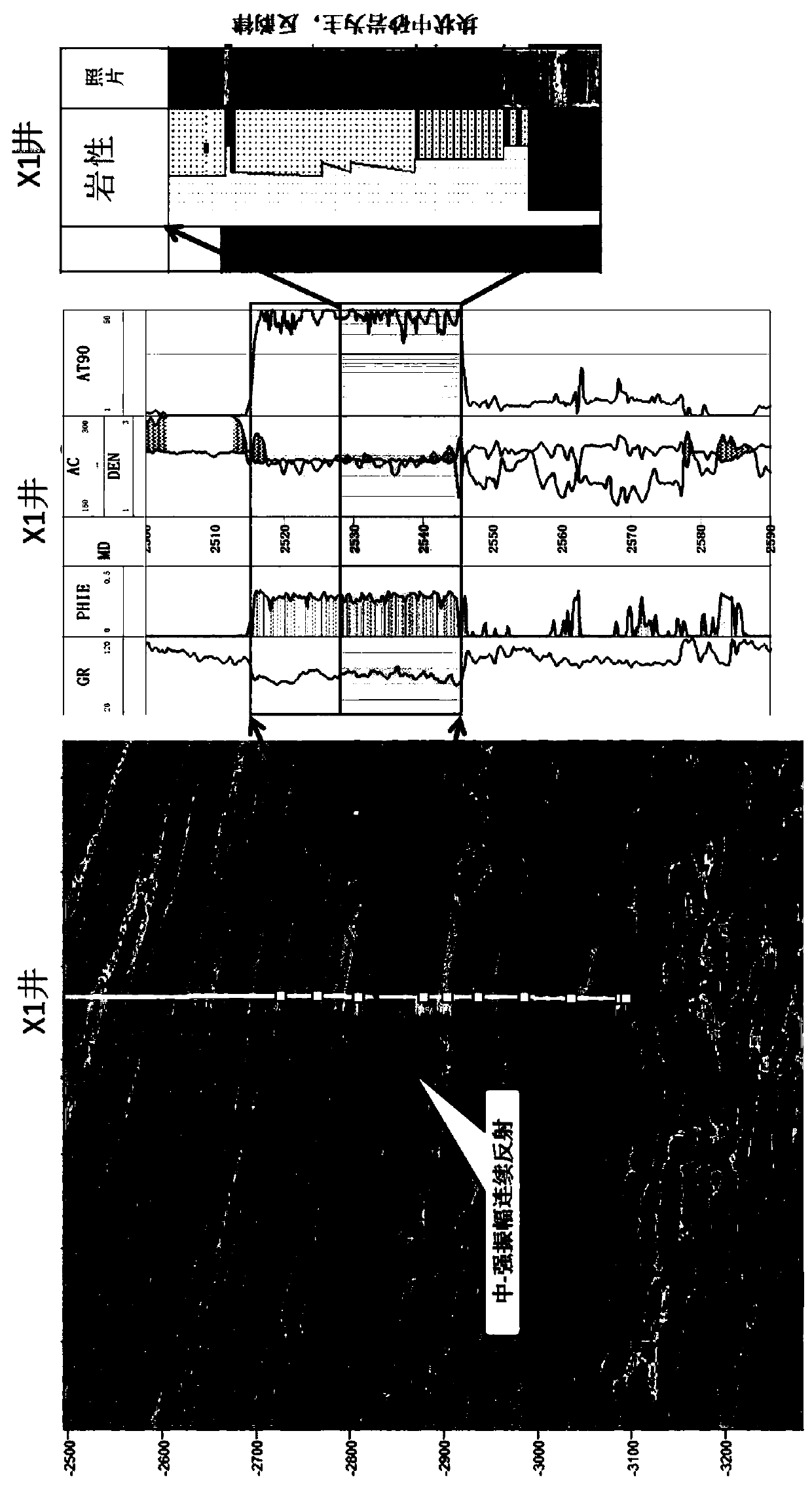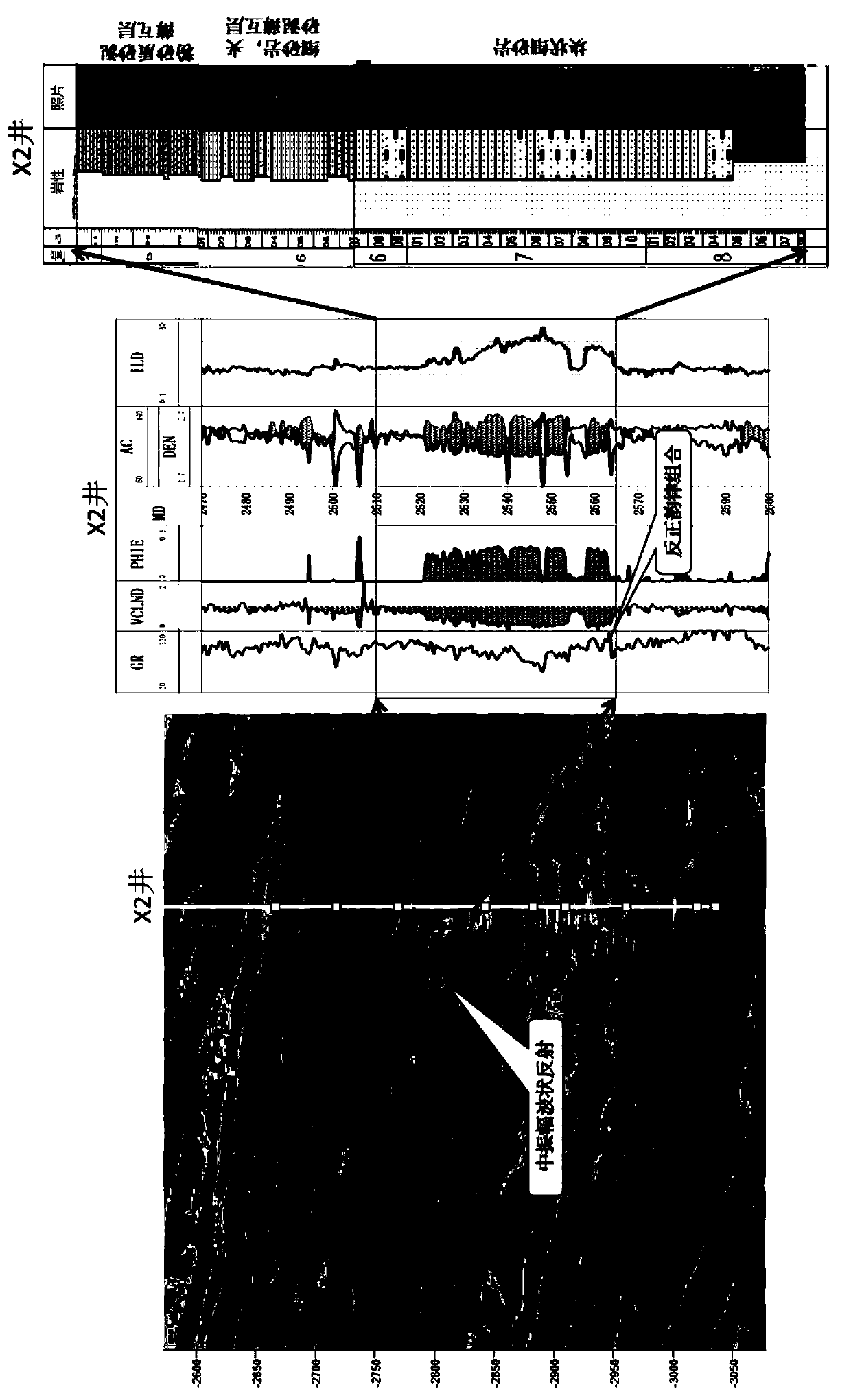Deep sea lobe reservoir configuration characterization method based on well-to-seismic mode fitting
An architecture and model technology, applied in the field of deep-sea lobe reservoir architecture characterization, can solve the problems of complex and changeable, different horizontal and vertical connectivity, restricting the efficient development of oil reservoirs, etc., to achieve efficient development and reduce drilling costs. effect of risk
- Summary
- Abstract
- Description
- Claims
- Application Information
AI Technical Summary
Problems solved by technology
Method used
Image
Examples
Embodiment Construction
[0030] The present invention will be further described below in conjunction with the embodiments and the accompanying drawings.
[0031] A deep-sea lobe reservoir configuration characterization method based on well-seismic model fitting of the present invention, such as figure 1 shown, including the following steps:
[0032] A. Determining the type of architectural elements and their well-seismic response characteristics: Based on the core-logging-seismic calibration results, determine the architectural elements of the deep-sea lobe sedimentary series, and clarify the various Sedimentary characteristics, logging response characteristics and seismic response characteristics of architectural elements;
[0033] Such as figure 2 and 3 As shown, based on the core-logging-seismic calibration results, it is determined that three types of architectural elements such as sheet-like leaves, sandy water channels and muddy water channels are developed in the embodiment;
[0034] Such ...
PUM
 Login to View More
Login to View More Abstract
Description
Claims
Application Information
 Login to View More
Login to View More - R&D
- Intellectual Property
- Life Sciences
- Materials
- Tech Scout
- Unparalleled Data Quality
- Higher Quality Content
- 60% Fewer Hallucinations
Browse by: Latest US Patents, China's latest patents, Technical Efficacy Thesaurus, Application Domain, Technology Topic, Popular Technical Reports.
© 2025 PatSnap. All rights reserved.Legal|Privacy policy|Modern Slavery Act Transparency Statement|Sitemap|About US| Contact US: help@patsnap.com



